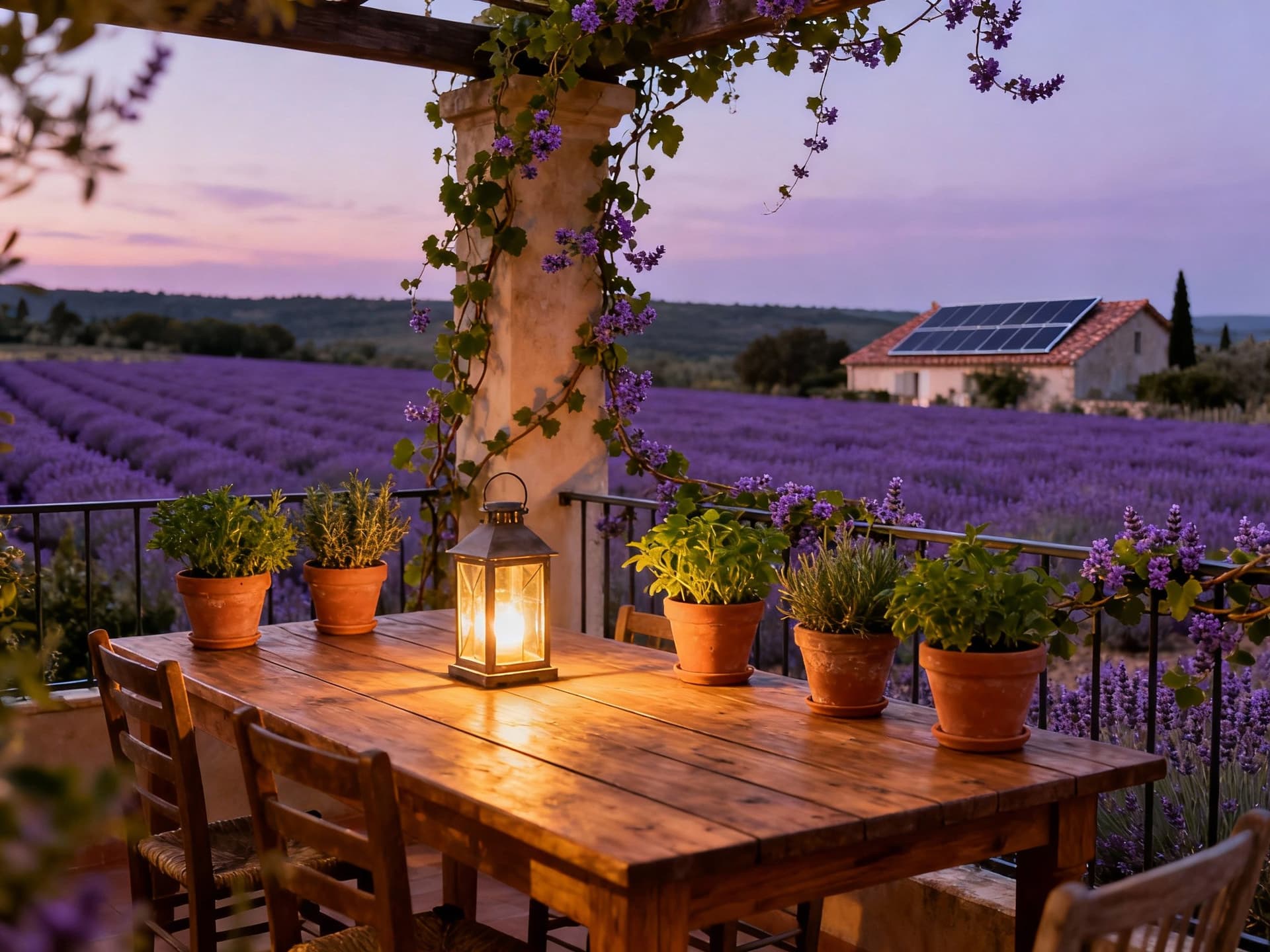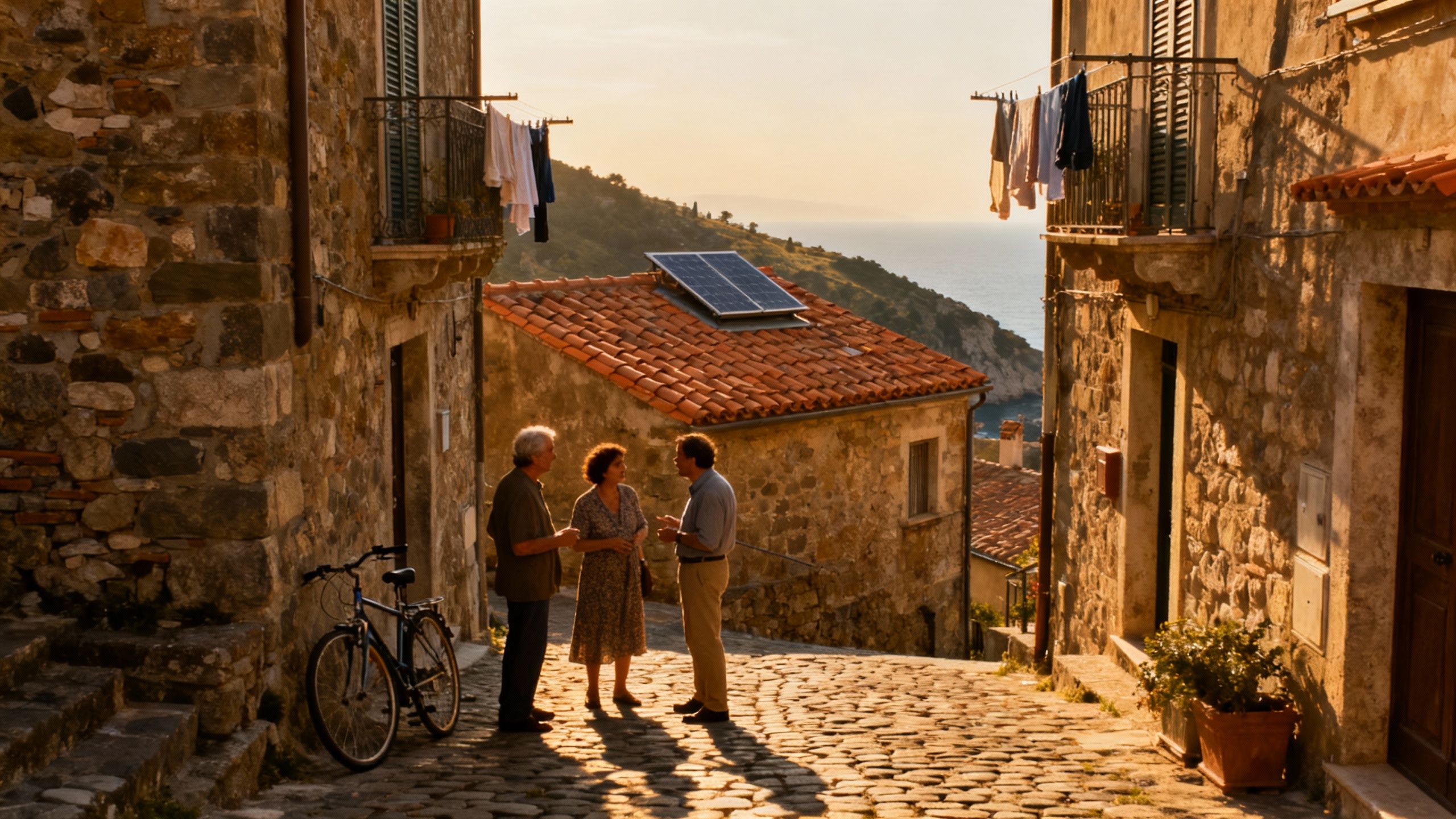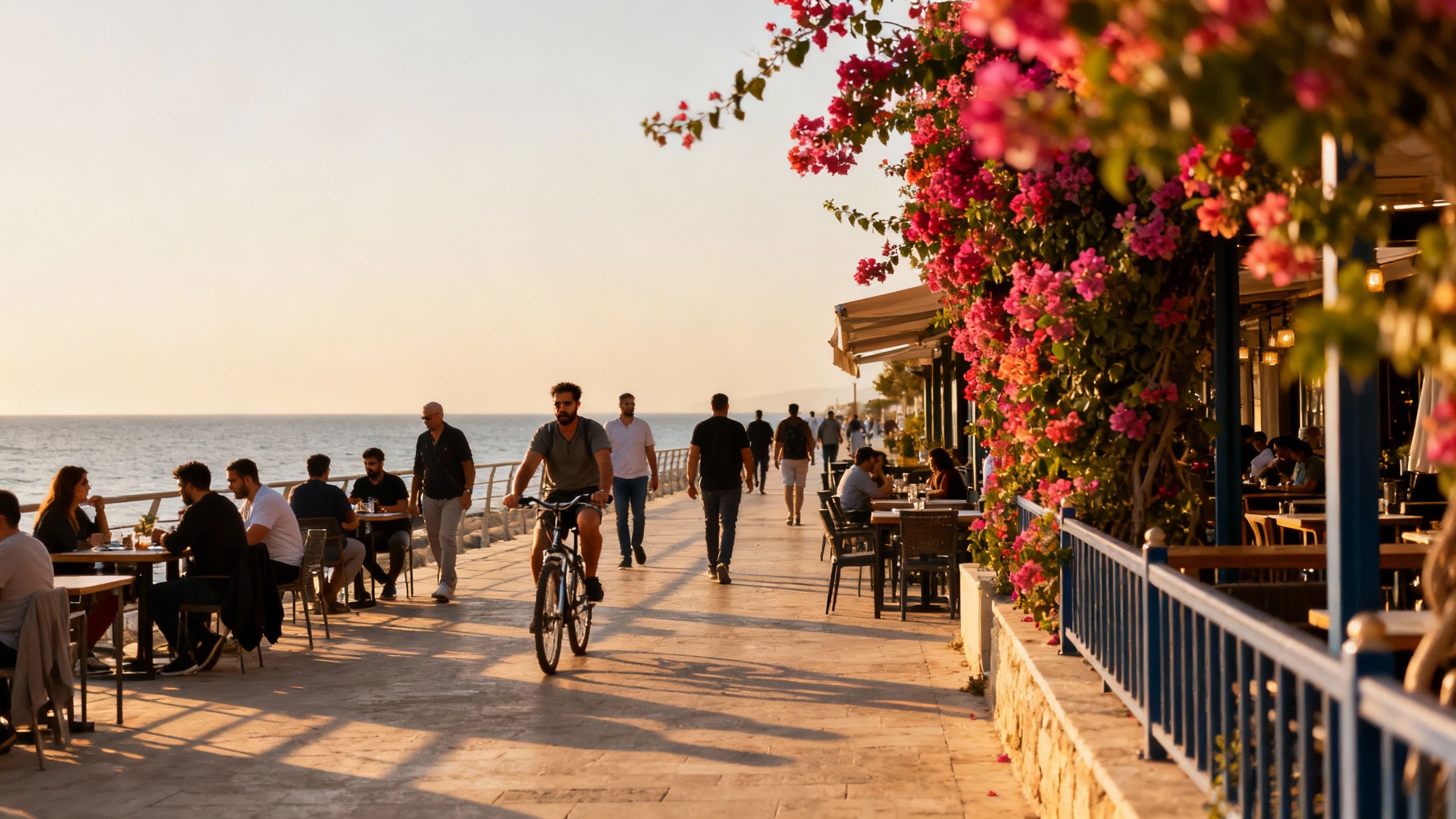Where France’s Green Grid Hides Lifestyle Value
France blends historic charm with rapid renewable expansion — buy where green grids, local markets and seasonality shape daily life and long‑term value.
Imagine standing at a sun-warmed café table on rue Cler in Paris, hearing shop shutters roll up, smelling warm croissants and earth after rain. Picture a Breton fishing village where morning light gilds slate roofs and wind‑sculpted pines surround stone cottages with solar panels discreetly tucked behind chimneys. In France the rhythm of life is shaped by seasons, markets and the slow choreography of neighbourhoods — and today, that rhythm increasingly moves in step with wind turbines, rooftop solar and local energy co‑ops. For international buyers who care about light, soil, and a low‑impact life, France offers a rare mix: historic beauty braided with fast‑moving green infrastructure that changes where value hides.
Living the French life, with a green beat

Days here are tactile: marché stalls heaped with herbs and charcuterie, canals edged with plane trees, and evenings that stretch into tapas‑style apéritifs. In coastal Brittany you wake to salt and gull calls; in Provence the air fills with lavender and cicadas; in Lyon you follow a route of bouchons and riverside promenades. Across regions, a new practical rhythm sits alongside this romance: public charging points at train stations, village solar gardens, and municipal schemes to insulate old stone houses for lower bills and quieter winters. That combination—sensory living plus sustainable upgrades—makes many corners of France feel both timeless and future‑ready.
Neighbourhoods that feel like chapters in a life story
Walk Le Marais and you pass centuries of façades, discreet courtyards and cafés where weekend discussions tilt between art and urban greening. In Montpellier’s Antigone district you’ll find modern terraces, community gardens and cyclists outnumbering cars. Head to Île‑de‑Ré for oyster stalls, salt marshes and villages that run on a slower, tidal timetable — here local energy cooperatives and strict building codes protect landscape character while encouraging solar on rooftops. These places shape how you live: small kitchens for market cooking, courtyards for social evenings, and an expectation that home is both refuge and contribution to place.
Food, markets and the seasons — the daily curriculum
Markets are the connective tissue of life in France: Rue Mouffetard in Paris, the morning marché in Aix‑en‑Provence, the fish market at Concarneau. Seasonal eating isn’t a marketing line here — it’s how people plan weekends and gardens. For buyers wanting to garden or host, that means properties with south‑facing plots, raised beds and water‑wise plantings matter more than a glossy kitchen island. Many eco‑minded buyers look for homes with rainwater collection, mature hedges for biodiversity, and nearby producers for weekly swaps and shared ovens.
- Morning market cafés (Rue Cler, Paris); oyster stalls (Île‑de‑Ré); Plage des Américains promenade (Biarritz); village bread ovens and communal gardens (Dordogne); Montpellier cycle lanes and co‑housing courtyards; weekly organic market at Marché Forville (Cannes).
Making the move: lifestyle choices that shape property

The dream of a sunlit hilltop home meets a practical reality: markets shift. After several soft quarters, French housing activity picked up in 2025 as buyers reacted to lower borrowing costs and policy signals, which means pockets of renewed price pressure in coveted coastal and Parisian neighbourhoods. For green buyers, that pressure often pushes value toward less obvious places — villages with emerging solar co‑ops or towns already tied into regional wind projects. Working with a local notaire and agents knowledgeable about both conservation rules and green incentives helps you find those quieter seams of value.
Property styles that support an eco life
Stone village houses are romantic but often draughty; look for properties where previous owners have invested in insulation, double glazing with slim profiles, and renewable heating. Contemporary timber builds and renovated barns often come with better embodied carbon footprints and simpler paths to energy independence — rooftop PV, heat pumps, and battery‑ready wiring. ADEME’s renovation guidance shows that the right interventions can halve running costs and drastically raise comfort, so budget wisely: sometimes buying a slightly newer, well‑insulated home is better for lifestyle and planet than a bargain fixer‑upper.
Agents who double as place‑makers
- 1. Ask agents about local energy projects and grid stability — are there community solar schemes or planned offshore wind affecting the area? 2. Request EPC (performance) reports and any past insulation or renewable installations to see real operating savings. 3. Look for agencies that can connect you with local craftsmen who repair lime mortar and source reclaimed oak — these trades keep homes authentic and resilient. 4. Prioritise agents who introduce you to neighbours: a short chat often reveals flood history, water tastes, and where the best wood‑fired baker still bakes.
Insider knowledge: what expats wish they'd known
Expats tell the same three truths: language accelerates belonging, seasons matter more than square metres, and local networks shorten every transaction. A newer truth is emerging: the local green grid matters. France has increased solar and wind capacity rapidly, and developers like Neoen are scaling projects that touch regional energy supply. That affects where smart buyers choose to live — places near renewable projects often qualify for local rebates, better grid resilience and community energy tariffs. It’s not glamour, but it changes winter evenings and the monthly bill.
Cultural integration: small rituals that open doors
Say bonjour in the morning, bring something to the neighbour’s fête communale, learn a few market phrases, and you’re inside more quickly. In many villages, social life orbits the mairie and the boulangerie; being present at the Saturday market or monthly repair café not only gives you friendships but also practical tips — which carpenter does the best lime wash, which plumber understands old radiators, which electrician fits panels without unsightly frames. These local cues determine the ease of renovation and the life you’ll build.
Long‑term living: stewardship over speculation
- Choose places where: • community planning protects green space and views • there are incentives for renovation or municipal support for heat pumps • local supply chains (bakers, farmers, builders) are active • biodiversity measures (hedgerows, rain gardens) are visible — these elements make homes resilient to both climate and market swings.
If you’re ready to imagine the life — morning markets, coastal walks, village fêtes — and pair it with a pragmatic purchase, start by visiting in a season that reveals the place’s true pulse. Spring shows gardens awake, autumn reveals heating needs, and winter tests insulation. Talk to local notaires and agents about recent transaction patterns and green incentives; ask about grid ties and community energy schemes. When you combine place‑first curiosity with careful local expertise, you don’t just buy a house in France — you arrive in a community and a climate‑aware way of life.
Dutch property strategist who helped 200+ families find sustainable homes in southern Europe; expert in legal pathways and long-term stewardship.


